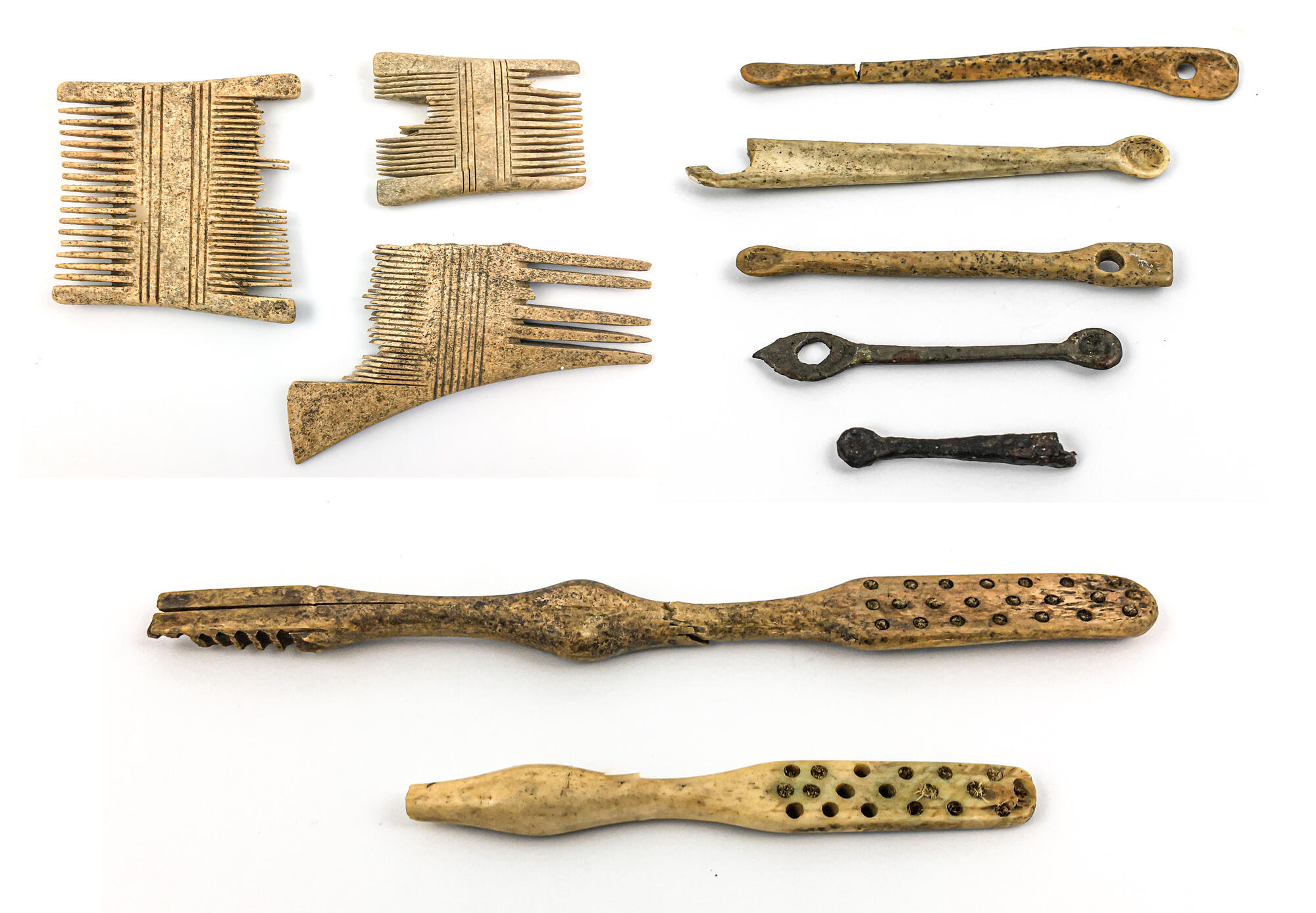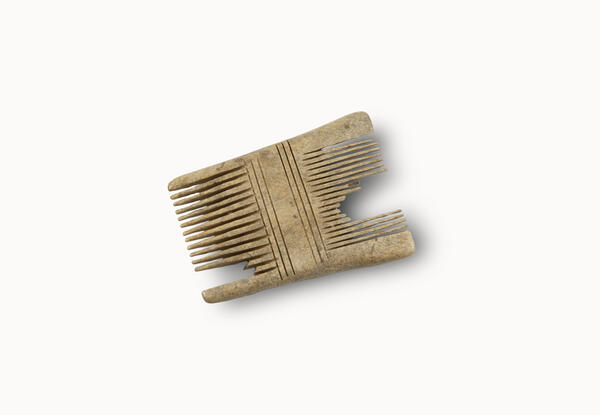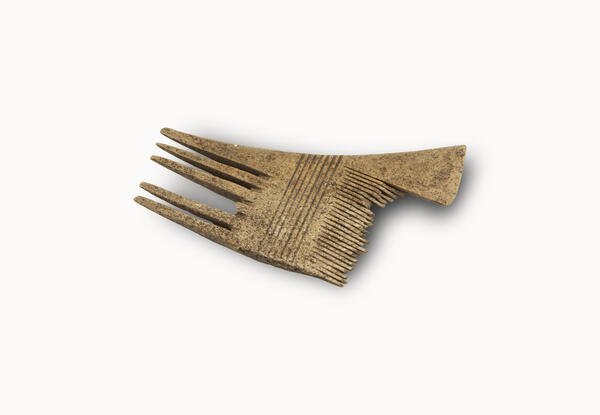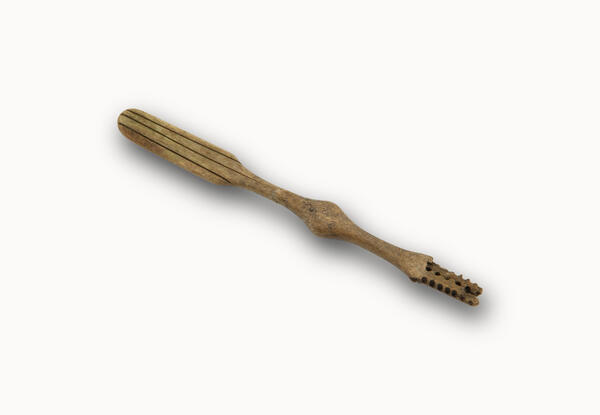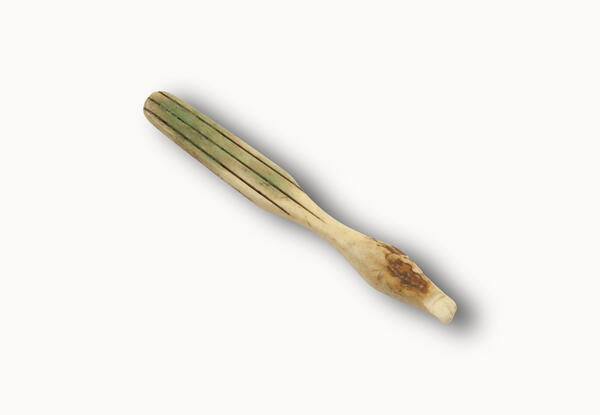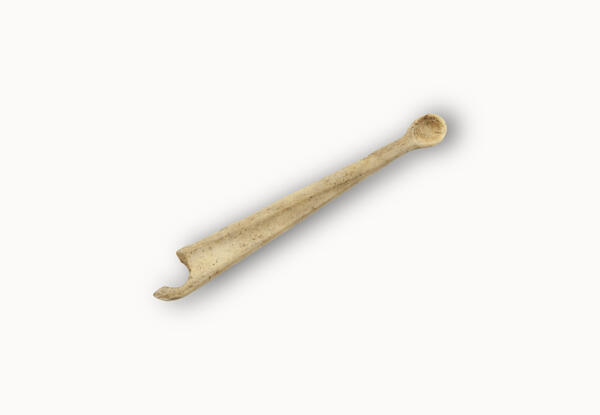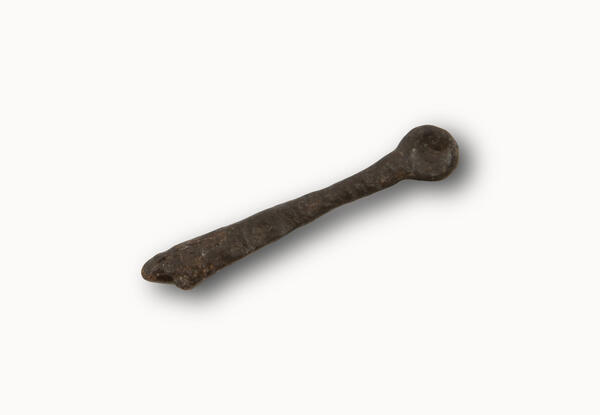In ancient Rus, people brushed their teeth with oak twigs with a frayed end, as well as birch and linden charcoal. Salt was also used: it was applied with fingers or a cloth soaked with a solution. Later, in the Middle Ages, they began to use rudimentary toothbrushes that looked like sticks with a bunch of pig bristles at one end.
In addition to accessories for oral care, archaeologists also found items called “kopoushki” in Gorokhovets. Opinions diverge when it comes to their intended use, but most scientists agree that kopoushki are ear picks.
They were initially made of wood and bone, later of iron, bronze, gold, silver, and even glass. Some of them were exquisitely decorated, which may mean that ear picks in Russia were not necessarily hidden from prying eyes.
An ear pick, or an ear scoop, is a product with a small spoon on a tapering end, ranging from 4 to 15 cm in length. The other end of the ear pick, apart from embellishments, often had a ring or slot — most likely for attaching the product to some item of clothing.
This is a fairly well-known and popular hygiene item. It was found in the deposits of the Bronze Age and later periods in various regions. On the territory of Russia, ear picks have also been found more than once: they were widespread in the 18th and 19th centuries. In the mid-20th century, they were used by the Buryats, the Khanty, and the Mansi.
Across cultures of many peoples of Eurasia, a comb had not only practical but also ideological significance. In global culture, it was a frequent attribute of mythological creatures, endowed with magical properties.
Combs were used not only for hair care but also for beard grooming. Craftsmen made them from animal horns and bones, the handles were usually decorated with a pattern. It was different each time, which may well be explained by the demand for a unique item.
The presented fragments of hygiene items were discovered in Gorokhovets during archaeological research on Naberezhnaya Street and Lenin Street between 2015 and 2017.
In addition to accessories for oral care, archaeologists also found items called “kopoushki” in Gorokhovets. Opinions diverge when it comes to their intended use, but most scientists agree that kopoushki are ear picks.
They were initially made of wood and bone, later of iron, bronze, gold, silver, and even glass. Some of them were exquisitely decorated, which may mean that ear picks in Russia were not necessarily hidden from prying eyes.
An ear pick, or an ear scoop, is a product with a small spoon on a tapering end, ranging from 4 to 15 cm in length. The other end of the ear pick, apart from embellishments, often had a ring or slot — most likely for attaching the product to some item of clothing.
This is a fairly well-known and popular hygiene item. It was found in the deposits of the Bronze Age and later periods in various regions. On the territory of Russia, ear picks have also been found more than once: they were widespread in the 18th and 19th centuries. In the mid-20th century, they were used by the Buryats, the Khanty, and the Mansi.
Across cultures of many peoples of Eurasia, a comb had not only practical but also ideological significance. In global culture, it was a frequent attribute of mythological creatures, endowed with magical properties.
Combs were used not only for hair care but also for beard grooming. Craftsmen made them from animal horns and bones, the handles were usually decorated with a pattern. It was different each time, which may well be explained by the demand for a unique item.
The presented fragments of hygiene items were discovered in Gorokhovets during archaeological research on Naberezhnaya Street and Lenin Street between 2015 and 2017.
